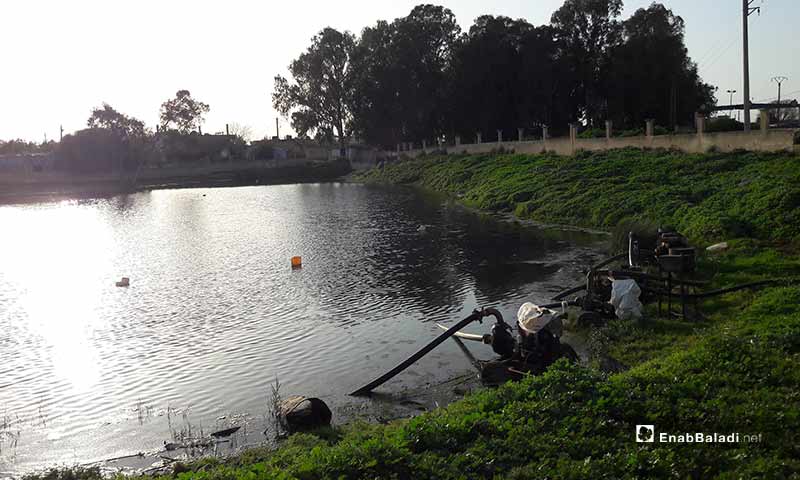



Arbitrary drilling of wells in Daraa continues, despite the rising water level in dams and lakes, and the heavy rainfall in Syria in general, and in Daraa in particular.
The phenomenon of drilling wells has spread widely during the past years of opposition control over the region, as drilling equipment is operated openly, without scrutiny that drilling previously faced by security.
However, and despite Syrian regime control over the region in July 2018, drilling has continued until the number of arbitrary wells in the governorate reached three thousand, according to the Director of Water Resources in the Daraa Governorate, Mohammed Munir al-Odeh, to al-Baath government newspaper on April 10 of this year.
The dangers of large-scale and arbitrary drilling of wells, which alerted the local councils during opposition control. They consequently issued several directives warning of the risks of continued drilling, and promising to hold violators and owners of drilling equipment responsible. However, the issue persisted after the regime took control of Daraa, affecting water table level of the Yarmouk basin, which is the groundwater reservoir which feeds wells and springs with fresh water.
An agricultural engineer, and former employee of the irrigation department of the Daraa Governorate, who asked not to be named, said that arbitrary drilling destroys the aquifers of the Yarmouk basin and its lakes, and diverts groundwater from its normal course.
He added that the depletion resulting from drilling did not only affect springs, but also many surface wells. Lake Zeizoun and Lake Mzeirib were also affected by the decline of their water levels over the past few years, which has led to a crisis and difficulty in securing drinking water. Lake Zeizoun is considered the primary source of water for the people of the town, while Lake Mzeirib feeds a large section of the neighborhoods of Daraa city with drinking water.
Farmer Abu Hassan (45 years) believes that the depletion of spring water had adversely impacted the area, due to the large number of wells in the areas of Da’el and Tafas. These areas benefit from the operation of electric transformers powering water pumps, and the extraction of water from the lakes.
After a significant decline in its water reservoir, over the past two years, the water level in Lake Mezireb has returned. The lake contains desalination pumps which supply the city of Daraa with drinking water, and its water levels have risen significantly due to heavy rains, and the aversion of agricultural landowners from irrigating their crops from arbitrary wells.
Located in the western countryside of Daraa, 11 kilometers from the city of Daraa, the lake is famous for its beauty, making it a tourist destination and a source of livelihood for fishermen in the region.
Mzeirib is one of the most important water resources for irrigation. Water is extracted from the lake and distributed to farmers through an underground pipe network, which saves farmers some production cost.
According to Abu Hassan, water from lake spares farmers the high costs of fuel, as it does not require the operation of engines to pump water, which consumes six liters of diesel fuel (600 SYP per liter). It also saves them the cost of oil changes for the engine and its spare parts.
However, Abu Hassan also expressed his fears that this situation will not be sustainable. As the summer begins, the water levels of the lake begin to drop, as the owners of arbitrary wells begin extracting groundwater, in the absence of action by the Syrian regime to end this practice.
if you think the article contain wrong information or you have additional details Send Correction